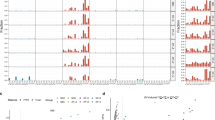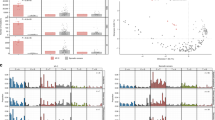Abstract
With the aim to devise a long-term gene therapy protocol for skin cancers in individuals affected by the inherited autosomal recessive xeroderma pigmentosum, we transferred the human DNA repair XPA, XPB/ERCC3 and XPC cDNAs, by using the recombinant retroviral vector LXSN, into primary and immortalized fibroblasts obtained from two XP-A, one XP-B (associated with Cockayne’s syndrome) and two XP-C patients. After transduction, the complete correction of DNA repair deficiency and functional expression of the transgenes were monitored by UV survival, unscheduled DNA synthesis and recovery of RNA synthesis, and Western blots. The results show that the recombinant retroviruses are highly efficient vectors to transfer and stably express the human DNA repair genes in XP cells and correct the defect of DNA repair of group A, B and C. With our previous results with XPD/ERCC2, the present work extends further promising issues for the gene therapy strategy for most patients suffering from this cancer-prone syndrome.
This is a preview of subscription content, access via your institution
Access options
Subscribe to this journal
Receive 12 print issues and online access
$259.00 per year
only $21.58 per issue
Buy this article
- Purchase on Springer Link
- Instant access to full article PDF
Prices may be subject to local taxes which are calculated during checkout
Similar content being viewed by others
Author information
Authors and Affiliations
Rights and permissions
About this article
Cite this article
Zeng, L., Quilliet, X., Chevallier-Lagente, O. et al. Retrovirus-mediated gene transfer corrects DNA repair defect of xeroderma pigmentosum cells of complementation groups A, B and C. Gene Ther 4, 1077–1084 (1997). https://doi.org/10.1038/sj.gt.3300495
Received:
Accepted:
Issue Date:
DOI: https://doi.org/10.1038/sj.gt.3300495
Keywords
This article is cited by
-
Oxidative and Energy Metabolism as Potential Clues for Clinical Heterogeneity in Nucleotide Excision Repair Disorders
Journal of Investigative Dermatology (2015)
-
Preclinical Corrective Gene Transfer in Xeroderma Pigmentosum Human Skin Stem Cells
Molecular Therapy (2012)
-
Identification of XP Complementation Groups by Recombinant Adenovirus Carrying DNA Repair Genes
Journal of Investigative Dermatology (2009)
-
Catalase overexpression reduces UVB-induced apoptosis in a human xeroderma pigmentosum reconstructed epidermis
Cancer Gene Therapy (2008)
-
Deletion of 5′ sequences of the CSB gene provides insight into the pathophysiology of Cockayne syndrome
European Journal of Human Genetics (2008)



